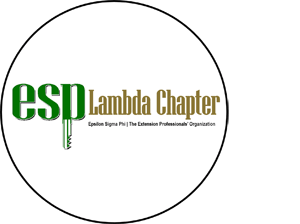In a recent staff survey about “superpowers of educators” staff shared reasonable confidence for convening interesting meetings. That is good news – as we end up hosting lots of meetings in Extension! Thoughtful practices for running meetings include – be considerate of the those in attendance, treat others with kindness and respect, and think of the outcomes that you want to achieve when planning the agenda. Below are a few practices to observe and put into place regularly. Some of these items have been covered in the Program Advisory Committee Handbook.
Tips for transforming meetings from mundane to engaging include intentional planning and perhaps a few predictable strategies:
- Curate a Thoughtful Agenda. An agenda is more than a list of topics; it’s a roadmap for the meeting. Prioritize the most important items and allocate time slots for each. Include a mix of presentations, discussions, and interactive activities to maintain interest. Sharing the agenda ahead of time allows attendees to prepare and contribute meaningfully – and offer suggestions for additional agenda items.
- Meeting time/place. Meet at a time and place appropriate for your committee – it’s worth the time to Doodle, poll, ask (yes, I realize that can be painful).
- Foster an Inclusive Environment. Encourage participation from all attendees by creating an inclusive environment. Start with icebreakers or small talk to ease participants into the meeting. Use techniques like round-robin or small group discussions to ensure everyone’s voice is heard. An inclusive meeting not only garners diverse perspectives but also keeps participants engaged and connected to one another and the meeting convener.
- Understand member motivation. People have reasons for being on committees. Identify these reasons and try to make their time personally rewarding. Also, letting them know that you appreciate them goes a long way. A simple email saying thanks makes a difference.
- Meetings do not have to be boring. Plan something fun for your committee once a year – sharing a meal, a field visit to a program, or visiting other local programs could build relationships and program or evaluation strategies. Invest your time and your member’s time in experiences that will members to work as a team with you.
- Navigating meetings. Not everything will go smooth. Expect there to be hoops and hurdles. Learn about team dynamics and how to navigate differences, utilize strengths and work to neutralize perceived power differences with strategies for collecting ideas and making decisions. Below are a few more tips for helping to navigate meetings:
-
-
- Provide Social Interaction. Informal social interaction, usually in the form of refreshments, allows the committee members time to continue conversations from the meeting, meet with sub-committee members, or build informal networks.
-
-
-
- Moving action items forward. Change your meetings to “doings” – Always treat meetings as an opportunity to create a plan, strategy, report, outline, idea etc. Have a specific purpose and desired outcomes distributed with the agenda.
-
-
-
- Assign Tasks to People. Specific action steps should always be assigned to specific individuals. If there are large tasks, make an individual a sub-committee chair to facilitate a smaller group.
-
-
-
- Assign Deadlines. Give individuals a definite time for completion of the task. A common deadline is by the next meeting.
-
-
-
- End with Action Items. Conclude the meeting by summarizing key points and outlining actionable next steps. Assign responsibilities and set deadlines to ensure follow-through. This reinforces the meeting’s purpose and keeps momentum going.
-
-
-
- End on Time. Participants tend to get disenchanted when meetings are too long or go over their time limit. Be extremely time conscious and end on time.
-
-
-
- Be Prompt with Follow-Up. Send all committee members a recap of the action steps and assignments within a few days following the meeting. This serves as a reminder and also as an update to absent members.
-
-
-
- Evaluate the Meeting. Distribute a short survey that asks what the participants thought about the meeting and how future meetings can be more useful.
-
-
-
- End on a Positive Note. Affirmations are very popular and provide a source of motivation to the group. Use inspirational quotes, motivational poems, or uplifting short stories.
-
-
-
- Announce the Next Meeting, Time and Location
-
- Have additional tips for running meetings that matter? Please send to Celeste Carmichael, cjc17@cornell.edu.
Based on content from Extension Advisory Handbook: https://cornell.box.com/s/id39taiuthbby6qy4jz37b9ly9shk6hz

Leave a comment